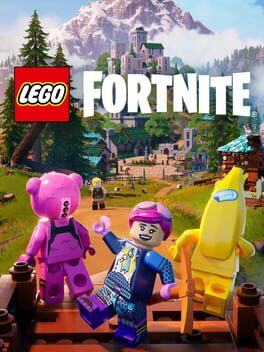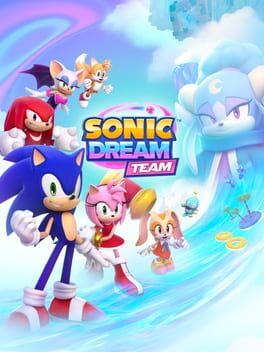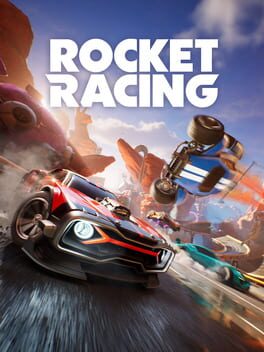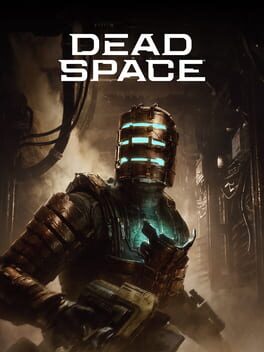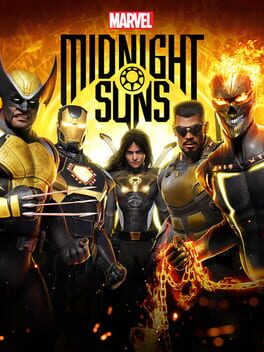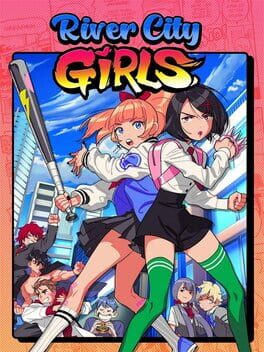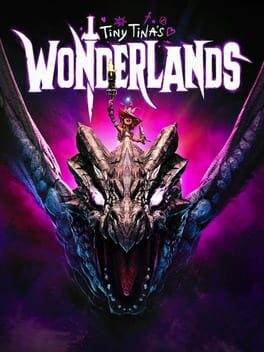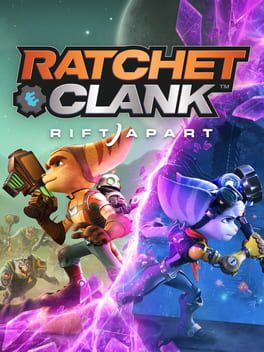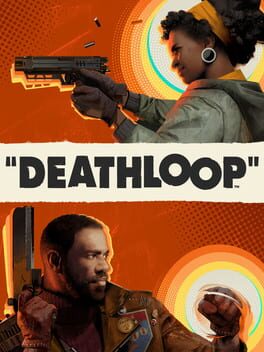HotPicklePizza
BACKER
2023
2023
2023
I bought this to bring to a Christmas party knowing basically nothing about it. I expected some little quirky low-intensity mini-games. What I got were quirky exercise games that made us all wish we weren't wearing sweaters and hadn't just eaten a huge party meal.
Fine game but just know you're about to be sweating.
Fine game but just know you're about to be sweating.
2023
Excellent game that left me wanting more.
A real breath of fresh air following the decade and a half of NSMB art style. It feels like the theme of Wonder is how wonderful it is to be weird. Strange little critters and moments wait around every corner but this conceit becomes the reason why the game stalls out in the final act/post game.
Late game levels and Special worlds in Mario games are moments to throw out the playbook and make something crazy. Remember the seemingly simple yet truly masterful design of the earlier levels that taught you systems and mechanics? Enough learning; it's time to perform. You could make a passable case for Wonder following that same structure but in action... it never feels like it gets there. When you make a game about the unexpected being everywhere, the unexpected becomes commonplace unless you continue to ramp up how you iterate on that theme. Wonder bites off more than it can chew in this regard.
All that said, I want games to do that. Swing for the fences. I'd rather a game flounder in the attempt at greatness than give me the exact same tired "winning" formula. The actual problem with Wonder is its multiplayer.
Wonder largely copies prior 2D Mario titles for its multiplayer "rules" but it makes a few simple tweaks. Not all of them are terrible: the addition of 3 characters (give or take palette swaps) that offer varying levels of interactivity and difficulty is neat! Not revolutionary but a welcome change.
Wonder really fumbles when it comes to the seemingly minor pieces of what makes a multiplayer game function. Namely, there's no persistent player 1. I'm sure there's some veiled reason as to who the "leader" is but it seems to jump between which player has lived the longest, finished the most recent level the fastest, or even just hit A first to select the newest stage. Now, this wouldn't matter except that a too-tight camera solely follows this arbitrarily chosen player 1. Fall out of that Miyamoto-ordained player's field of play and you're a ghost. Which would be fine except that starts a measly 5-second timer to reach either the living player(s) or an online multiplayer standee to return to life or drain a life. It feels designed to facilitate super tight synchronous play or to pit players against each other--not to encourage varied skill levels or playstyles. I played this game with adults who all like games and it was like herding cats. Imagine being a parent playing with your kids. Not ideal.
A good Mario game which makes it a great video game but it could have been an all-timer.
A real breath of fresh air following the decade and a half of NSMB art style. It feels like the theme of Wonder is how wonderful it is to be weird. Strange little critters and moments wait around every corner but this conceit becomes the reason why the game stalls out in the final act/post game.
Late game levels and Special worlds in Mario games are moments to throw out the playbook and make something crazy. Remember the seemingly simple yet truly masterful design of the earlier levels that taught you systems and mechanics? Enough learning; it's time to perform. You could make a passable case for Wonder following that same structure but in action... it never feels like it gets there. When you make a game about the unexpected being everywhere, the unexpected becomes commonplace unless you continue to ramp up how you iterate on that theme. Wonder bites off more than it can chew in this regard.
All that said, I want games to do that. Swing for the fences. I'd rather a game flounder in the attempt at greatness than give me the exact same tired "winning" formula. The actual problem with Wonder is its multiplayer.
Wonder largely copies prior 2D Mario titles for its multiplayer "rules" but it makes a few simple tweaks. Not all of them are terrible: the addition of 3 characters (give or take palette swaps) that offer varying levels of interactivity and difficulty is neat! Not revolutionary but a welcome change.
Wonder really fumbles when it comes to the seemingly minor pieces of what makes a multiplayer game function. Namely, there's no persistent player 1. I'm sure there's some veiled reason as to who the "leader" is but it seems to jump between which player has lived the longest, finished the most recent level the fastest, or even just hit A first to select the newest stage. Now, this wouldn't matter except that a too-tight camera solely follows this arbitrarily chosen player 1. Fall out of that Miyamoto-ordained player's field of play and you're a ghost. Which would be fine except that starts a measly 5-second timer to reach either the living player(s) or an online multiplayer standee to return to life or drain a life. It feels designed to facilitate super tight synchronous play or to pit players against each other--not to encourage varied skill levels or playstyles. I played this game with adults who all like games and it was like herding cats. Imagine being a parent playing with your kids. Not ideal.
A good Mario game which makes it a great video game but it could have been an all-timer.
As I clean up the final few side objectives in Insomniac’s most recent take on Spider-Man, I can’t help but feel like I’ve missed something. Or that something is missing.
When compared to the component parts of prior entries in the series, Spider-Man 2 is better in every measurable way.
Movement feels Amazing—possibly the best I’ve experienced in an open world brawler. The addition of (spoiler) web wings and a couple minor swinging “get out of jail free” buttons make getting around virtual New York feel the best it ever has in a game.
The combat has been thoughtfully retooled and expanded. The simple loop of, “spam attacks until you have to dodge,” is subverted somewhat with the addition of an extremely forgiving parry mechanic, and there are enough new abilities and gadgets that you’ll be using something new constantly throughout the game’s 20ish-hour runtime.
Stealth sections (while not near the quality of a certain series of Batman games) don’t overstay their welcome and give you quite a bit of freedom with the addition of new traversal gadgets. I could take or leave these but they’re largely inoffensive.
Set pieces are the big upgrade here. Spider-Man’s rogues gallery is on full display here and each villain is given time and space to be a significant threat. This game is the Ultimate showcase of the PS5’s power. From gigantic city-spanning boss fights to the most impressive fast travel system ever to grace a game of this kind, Spider-Man 2 is staggering as a technological achievement more so than one for gaming.
All of these things are positive. This game is a marvel. What am I missing here? What makes it a great game rather than an Amazing experience?
I keep coming back to how I felt playing the first one. Insomniac’s first entry in the franchise was pivotal. Everything about it was not only Sensational but also unique as an entry in the Spider-Man canon. As a game, it felt like a culmination of every one of the studio’s games before it. The story planted its flag as a unique take on a classic character—equal parts homage to and novel take on the characters involved. Everything was honored but nothing was sacred. Spider-Man: Miles Morales took that ethos and applied it to its namesake during the height of the “Into the Spider-Verse” zeitgeist while trimming the fat of the base game making something thoughtful and jampacked with great vibes, characters, and development.
Spider-Man 2 isn’t a bad game—not in the slightest. But it falls just short of extraordinary in part because of the other places the short series has already gone and its failure to reach those same heights.
A great game that leaves me feeling conflicted and wishing we got a Sunset Overdrive 2, Spider-Man 2 is better than anything that came before it and brings little new to the table. Clean, clinical excellence but certainly not lightning in a bottle.
But who could fault a studio for making something excellent instead of something Spectacular?
When compared to the component parts of prior entries in the series, Spider-Man 2 is better in every measurable way.
Movement feels Amazing—possibly the best I’ve experienced in an open world brawler. The addition of (spoiler) web wings and a couple minor swinging “get out of jail free” buttons make getting around virtual New York feel the best it ever has in a game.
The combat has been thoughtfully retooled and expanded. The simple loop of, “spam attacks until you have to dodge,” is subverted somewhat with the addition of an extremely forgiving parry mechanic, and there are enough new abilities and gadgets that you’ll be using something new constantly throughout the game’s 20ish-hour runtime.
Stealth sections (while not near the quality of a certain series of Batman games) don’t overstay their welcome and give you quite a bit of freedom with the addition of new traversal gadgets. I could take or leave these but they’re largely inoffensive.
Set pieces are the big upgrade here. Spider-Man’s rogues gallery is on full display here and each villain is given time and space to be a significant threat. This game is the Ultimate showcase of the PS5’s power. From gigantic city-spanning boss fights to the most impressive fast travel system ever to grace a game of this kind, Spider-Man 2 is staggering as a technological achievement more so than one for gaming.
All of these things are positive. This game is a marvel. What am I missing here? What makes it a great game rather than an Amazing experience?
I keep coming back to how I felt playing the first one. Insomniac’s first entry in the franchise was pivotal. Everything about it was not only Sensational but also unique as an entry in the Spider-Man canon. As a game, it felt like a culmination of every one of the studio’s games before it. The story planted its flag as a unique take on a classic character—equal parts homage to and novel take on the characters involved. Everything was honored but nothing was sacred. Spider-Man: Miles Morales took that ethos and applied it to its namesake during the height of the “Into the Spider-Verse” zeitgeist while trimming the fat of the base game making something thoughtful and jampacked with great vibes, characters, and development.
Spider-Man 2 isn’t a bad game—not in the slightest. But it falls just short of extraordinary in part because of the other places the short series has already gone and its failure to reach those same heights.
A great game that leaves me feeling conflicted and wishing we got a Sunset Overdrive 2, Spider-Man 2 is better than anything that came before it and brings little new to the table. Clean, clinical excellence but certainly not lightning in a bottle.
But who could fault a studio for making something excellent instead of something Spectacular?
2023
If it ain't broke, upscale it to 4K 60FPS, make a ton of quality of life improvements, clean up the worst chapter in the game, and include a new alternate ending that sets up for more great things to come.
Dead Space (2008) is one of my top 3 favorite games of all time, so seeing it get the Resident Evil 2 remake treatment was a dream come true. Is the improvement as alarmingly impressive as RE2 Remake? Absolutely not--because this time the original still holds up. Where Capcom tamed RE2 with a machete and blowtorch, EA Motive resuscitated Dead Space with surgical precision. This is still Dead Space with less fat and more fun. Chapters are seamless, backtracking is encouraged by way of a travel system and side-quests, zero gravity is more intuitive and less of a hurdle, and that last chapter is mercifully concise (though admittedly still a bit of a slog).
All-in-all Dead Space is yet another stellar horror game remake. I can only hope Motive gets the chance to tackle Dead Space 2 and hopefully fix the mess that is Dead Space 3.
Dead Space (2008) is one of my top 3 favorite games of all time, so seeing it get the Resident Evil 2 remake treatment was a dream come true. Is the improvement as alarmingly impressive as RE2 Remake? Absolutely not--because this time the original still holds up. Where Capcom tamed RE2 with a machete and blowtorch, EA Motive resuscitated Dead Space with surgical precision. This is still Dead Space with less fat and more fun. Chapters are seamless, backtracking is encouraged by way of a travel system and side-quests, zero gravity is more intuitive and less of a hurdle, and that last chapter is mercifully concise (though admittedly still a bit of a slog).
All-in-all Dead Space is yet another stellar horror game remake. I can only hope Motive gets the chance to tackle Dead Space 2 and hopefully fix the mess that is Dead Space 3.
What an awesome surprise.
The XCOM people made Marvel Emblem Three Houses and it absolutely rules. I went into this game after hearing some good things and I still expected it to be a bit of a slog. Now after 50+ to finish, I'm ready for DLC. Firaxis managed to make something unique, heartfelt, and fun out a property that feels almost worn into the ground by the MCU.
The combat? An interesting spin on "tile" games disguised as a card battler. The hub world? Marvel dating sim without the dating. The customization? Nearly Flawless. Give or take some uncanny valley NPCs and a crash or two along the way, and this was one of my favorite releases of 2022. Big recommend to fans of the genre.
The XCOM people made Marvel Emblem Three Houses and it absolutely rules. I went into this game after hearing some good things and I still expected it to be a bit of a slog. Now after 50+ to finish, I'm ready for DLC. Firaxis managed to make something unique, heartfelt, and fun out a property that feels almost worn into the ground by the MCU.
The combat? An interesting spin on "tile" games disguised as a card battler. The hub world? Marvel dating sim without the dating. The customization? Nearly Flawless. Give or take some uncanny valley NPCs and a crash or two along the way, and this was one of my favorite releases of 2022. Big recommend to fans of the genre.
2019
Pretty okay!
There are no outright glitches that I encountered, but some pretty frustrating perspective, hitbox, and quality of life issues keep this game from being great. The shonen camp vibes are immaculate but the game itself is passable at best. If the reviews of RCG2 are any indication, there's no reason to play this test run at a River City homage. Just skip to the sequel.
There are no outright glitches that I encountered, but some pretty frustrating perspective, hitbox, and quality of life issues keep this game from being great. The shonen camp vibes are immaculate but the game itself is passable at best. If the reviews of RCG2 are any indication, there's no reason to play this test run at a River City homage. Just skip to the sequel.
The promise? A full game’s worth of the stand-out Borderlands 2 DLC: Tiny Tina’s Assault on Dragon Keep.
The reality? A Borderlands 3 expand-alone title with a D&D skin.
Don’t get me wrong. There’s a lot to love here. The franchise’s first foray into true character creation is way better than it has any right to be. There are some standout performances from Ashley Birch (duh) along with Wanda Sykes and Andy Samberg of all people. The multi-class system is novel enough to propel even the most series-weary veteran Borderlands player through leveling a character. The Borderlands riffing on D&D is generally solid and at times downright delightful–the overworld map being the actual tabletop the game is being played on was a surprising treat, cheetos and all.
Wonderlands succeeds where prior entries in the series succeeded and fails where they failed. The game is a bit too long considering how little it iterates after the first 10 or so hours. There’s a running theory that certain areas in the game were originally intended for a DLC model similar to other Borderlands titles but were added to ensure the game had a certain length/amount of content. I’m tempted to believe this theory because these areas are easy to pick out as largely separate from the critical path and the post-launch DLC for the game consists of some updates to the Diablo rift-like “chaos chamber” system and a few single area dungeons (10-minute runtimes meant to be replayed). It may be apples and oranges, but comparing this title to the last similar attempt, Borderlands: The Pre-Sequel, it falls a bit flat. The story is less compelling than the bit (lol borderlands but d20s, get it?), things are a bit too long, and the DLC doubles down rather than expanding or correcting. These flaws don’t make it a bad game. But they keep it firmly out of the “great” category.
The reality? A Borderlands 3 expand-alone title with a D&D skin.
Don’t get me wrong. There’s a lot to love here. The franchise’s first foray into true character creation is way better than it has any right to be. There are some standout performances from Ashley Birch (duh) along with Wanda Sykes and Andy Samberg of all people. The multi-class system is novel enough to propel even the most series-weary veteran Borderlands player through leveling a character. The Borderlands riffing on D&D is generally solid and at times downright delightful–the overworld map being the actual tabletop the game is being played on was a surprising treat, cheetos and all.
Wonderlands succeeds where prior entries in the series succeeded and fails where they failed. The game is a bit too long considering how little it iterates after the first 10 or so hours. There’s a running theory that certain areas in the game were originally intended for a DLC model similar to other Borderlands titles but were added to ensure the game had a certain length/amount of content. I’m tempted to believe this theory because these areas are easy to pick out as largely separate from the critical path and the post-launch DLC for the game consists of some updates to the Diablo rift-like “chaos chamber” system and a few single area dungeons (10-minute runtimes meant to be replayed). It may be apples and oranges, but comparing this title to the last similar attempt, Borderlands: The Pre-Sequel, it falls a bit flat. The story is less compelling than the bit (lol borderlands but d20s, get it?), things are a bit too long, and the DLC doubles down rather than expanding or correcting. These flaws don’t make it a bad game. But they keep it firmly out of the “great” category.
There are two main categories for movie sequels. “Different people experience the same thing” and “the same people experience the same thing on a bigger scale.” Horizon Forbidden West is option two.
It’s more Horizon with a nice new coat of paint. It’s the same (climbing, fighting robo-animals, exploring ruins) but with a little something extra (a grappling hook and glider, more techniques and weapon types, more side characters and depth to the story). If you liked the first Horizon but thought it felt old or crunchy, this is the game for you. If you didn’t like it… this new entry won’t do much to change that feeling. Credit where credit is due, Guerilla Games has made the best facial animations I’ve seen in a video game. The Horizon franchise isn’t especially going for photorealism but it is a gorgeous title and the performances throughout do a great job of supporting that beautiful environment. It feels like a real place with real people and people are at the heart of this story. Gun to my head, I would have a hard time telling you the story beats of Horizon Zero Dawn. It may be recency bias but Forbidden West feels more memorable and more conceptually sound. Every character involved developed and became something new and it has me interested in what’s next in the franchise.
Deep down, I wish I was excited and not just “interested” though.
It’s more Horizon with a nice new coat of paint. It’s the same (climbing, fighting robo-animals, exploring ruins) but with a little something extra (a grappling hook and glider, more techniques and weapon types, more side characters and depth to the story). If you liked the first Horizon but thought it felt old or crunchy, this is the game for you. If you didn’t like it… this new entry won’t do much to change that feeling. Credit where credit is due, Guerilla Games has made the best facial animations I’ve seen in a video game. The Horizon franchise isn’t especially going for photorealism but it is a gorgeous title and the performances throughout do a great job of supporting that beautiful environment. It feels like a real place with real people and people are at the heart of this story. Gun to my head, I would have a hard time telling you the story beats of Horizon Zero Dawn. It may be recency bias but Forbidden West feels more memorable and more conceptually sound. Every character involved developed and became something new and it has me interested in what’s next in the franchise.
Deep down, I wish I was excited and not just “interested” though.
2022
Tunic is the result of former Silverback Productions developer, Andrew Shouldice’s move to totally independent game development. It’s one of those games that make you think “Wow, one guy did all this?” And you would be wrong. There were more artists and composers that really made the game shine. But Shouldice made something special with Tunic.
I’m no stranger to the flawed game comparison simile. My elevator pitch recommendation for the game has been isometric Zelda meets Fez discovery. That feels mostly right but the sum feels greater than its parts in this case. Tunic is an isometric Zelda-like game with all the combat and puzzles you might expect. What really sets it apart however is the game’s emphasis on perspective and the unique implementation of an in-game manual offered to the player piecemeal through their adventure. At first, this mechanic serves as table setting and does little to truly inform your playthrough but it quickly becomes a lifeline in the strange world of Tunic. The game’s tone and scope shift and it offers much more than initially meets the eyes. And, this may seem like a small praise, but I love the length of the game. It’s only around 12 hours for a full playthrough. Longer for a 100% completion but not much so.
To have so much depth in such a small package is truly special.
I’m no stranger to the flawed game comparison simile. My elevator pitch recommendation for the game has been isometric Zelda meets Fez discovery. That feels mostly right but the sum feels greater than its parts in this case. Tunic is an isometric Zelda-like game with all the combat and puzzles you might expect. What really sets it apart however is the game’s emphasis on perspective and the unique implementation of an in-game manual offered to the player piecemeal through their adventure. At first, this mechanic serves as table setting and does little to truly inform your playthrough but it quickly becomes a lifeline in the strange world of Tunic. The game’s tone and scope shift and it offers much more than initially meets the eyes. And, this may seem like a small praise, but I love the length of the game. It’s only around 12 hours for a full playthrough. Longer for a 100% completion but not much so.
To have so much depth in such a small package is truly special.
2022
From Software’s most recent title is my favorite game this year and I don’t see that changing. In some ways, it feels too big to talk about. I can give the overused shorthand, “Breath of the Wild but Dark Souls” but that feels like both an inaccurate and insufficient description of this monstrous game. It feels less like a more fully realized Dark Souls and instead positions the Dark Souls games as more linear attempts at Elden Ring. It’s… a lot. And I’m doing a bad job describing it. Just needed to get some of this bloviating out of the way to have a coherent thought. Elden Ring is great. So what is it?
First, it is a From game. Elden Ring feels less like a new IP for the developer and more like a similar formula placed in a rich open world and allowed the space and time to breathe. As a player, you are continually rewarded for exploration by beautiful vistas, branching quests, and tons of visually varied loot. Whereas Dark Souls would reward a player for choosing the less obvious hallway in a castle, Elden Ring rewards a player for traveling hours off the critical path to fight a weird lichen guarded by floating beach jellyfish.
Controls feel familiar yet just new enough to make even the most recent Souls games feel sluggish and constrained. It’s also wonderful to see the influence of Sekiro on the new title. Elden Ring calls on the traversal and stealth mechanics of its shinobi-themed pseudo-predecessor often to great effect.
It is important to note that Elden Ring is not some one-size-fits-all jumping on point for the franchise. Fans of other action RPGs may find some of the game’s quirks troubling to parse such as a total lack of a quest log, a somewhat subtle shove to the game’s tutorial, and the sheer volume of skippable areas. I make no excuses for the game and remember when such quirks would have bothered me but it’s an absolute treat for fans of the franchise and those willing to give it a chance despite some momentary confusion. All-in-all, Elden Ring is an undertaking for better and worse. It’s a great game to get lost in, a tough game to marathon, and as satisfying as it is frustrating from time to time. It’s exactly what fans of the game hoped for from the trailers. It just makes me want a Sekiro 2.
First, it is a From game. Elden Ring feels less like a new IP for the developer and more like a similar formula placed in a rich open world and allowed the space and time to breathe. As a player, you are continually rewarded for exploration by beautiful vistas, branching quests, and tons of visually varied loot. Whereas Dark Souls would reward a player for choosing the less obvious hallway in a castle, Elden Ring rewards a player for traveling hours off the critical path to fight a weird lichen guarded by floating beach jellyfish.
Controls feel familiar yet just new enough to make even the most recent Souls games feel sluggish and constrained. It’s also wonderful to see the influence of Sekiro on the new title. Elden Ring calls on the traversal and stealth mechanics of its shinobi-themed pseudo-predecessor often to great effect.
It is important to note that Elden Ring is not some one-size-fits-all jumping on point for the franchise. Fans of other action RPGs may find some of the game’s quirks troubling to parse such as a total lack of a quest log, a somewhat subtle shove to the game’s tutorial, and the sheer volume of skippable areas. I make no excuses for the game and remember when such quirks would have bothered me but it’s an absolute treat for fans of the franchise and those willing to give it a chance despite some momentary confusion. All-in-all, Elden Ring is an undertaking for better and worse. It’s a great game to get lost in, a tough game to marathon, and as satisfying as it is frustrating from time to time. It’s exactly what fans of the game hoped for from the trailers. It just makes me want a Sekiro 2.
Another highly anticipated PS5 game for me personally, the latest entry in this long-running franchise is exactly what you think it is for better and worse.
It has all the production value you expect out of the franchise with Insomniac continuing at the helm. Wonderful performances from cast members both new and old, gorgeous and varied environments, near constant gags, and just enough emotion to get a little cheer out of me a time or two. But again, those things are expected. It may not be fair but Ratchet & Clank games have been coming out for so long now that even with a significant break between brand new games, Rift Apart doesn’t really feel new. Yes, the gameplay feels fresh enough and, yes, it takes full advantage of the more powerful console by way of bigger environments and a particularly impressive rift traversal mechanic. But Rift Apart feels like a sequel that only iterates by way of new hardware–not due to previous entries in the series or growth of the developer. Insomniac is one of the most high profile developers around right now. Rift Apart is good but if it had clearly benefited from the other games the studio has made, it could have been incredible.
I wanted a new 3D character platformer from the people who made Spider-Man and Sunset Overdrive. What we got was Ratchet & Clank 10. A fun ride for fans of this sort of game but ultimately a relatively same-y entry in the series.
It has all the production value you expect out of the franchise with Insomniac continuing at the helm. Wonderful performances from cast members both new and old, gorgeous and varied environments, near constant gags, and just enough emotion to get a little cheer out of me a time or two. But again, those things are expected. It may not be fair but Ratchet & Clank games have been coming out for so long now that even with a significant break between brand new games, Rift Apart doesn’t really feel new. Yes, the gameplay feels fresh enough and, yes, it takes full advantage of the more powerful console by way of bigger environments and a particularly impressive rift traversal mechanic. But Rift Apart feels like a sequel that only iterates by way of new hardware–not due to previous entries in the series or growth of the developer. Insomniac is one of the most high profile developers around right now. Rift Apart is good but if it had clearly benefited from the other games the studio has made, it could have been incredible.
I wanted a new 3D character platformer from the people who made Spider-Man and Sunset Overdrive. What we got was Ratchet & Clank 10. A fun ride for fans of this sort of game but ultimately a relatively same-y entry in the series.
2021
Did I expect the next game in the Dishonored series to be a PS5 launch title about dismantling an impressionist time cult? No, not really. But now I wouldn’t have it any other way.
Deathloop is a special game in that it continually gave me more than I asked for. Traversal that feels great? Check, but here are items and upgrades that really bust movement wide open. A story that justifies the game’s looping premise? For sure, but we’ll also give you knockout performances in every role and some real depth to each character if you’re willing to dig. Levels that feel purposeful and lived in? A tall ask but we’ll do that and make each space feel unique, interesting, and have at least three different versions. It’s a deceptively deep experience. At first what feels like Prey quickly gives way to Dishonored–all of which makes sense given Arkane Lyon’s tenure–but as you tug at each thread of the game, more and more reveals itself creating this standout rougelite action RPG experience that’s unlike anything else I’ve ever played. Okay, so that’s only sort of true. It’s like a TON of things I’ve played before but in the best of ways. The way it threads together the lineage of immersive first-person action games with an exceptional polish makes everything feel fresh.
Deathloop is its own marvel as much as it is the logical next step for Arkane as a studio.
Deathloop is a special game in that it continually gave me more than I asked for. Traversal that feels great? Check, but here are items and upgrades that really bust movement wide open. A story that justifies the game’s looping premise? For sure, but we’ll also give you knockout performances in every role and some real depth to each character if you’re willing to dig. Levels that feel purposeful and lived in? A tall ask but we’ll do that and make each space feel unique, interesting, and have at least three different versions. It’s a deceptively deep experience. At first what feels like Prey quickly gives way to Dishonored–all of which makes sense given Arkane Lyon’s tenure–but as you tug at each thread of the game, more and more reveals itself creating this standout rougelite action RPG experience that’s unlike anything else I’ve ever played. Okay, so that’s only sort of true. It’s like a TON of things I’ve played before but in the best of ways. The way it threads together the lineage of immersive first-person action games with an exceptional polish makes everything feel fresh.
Deathloop is its own marvel as much as it is the logical next step for Arkane as a studio.
